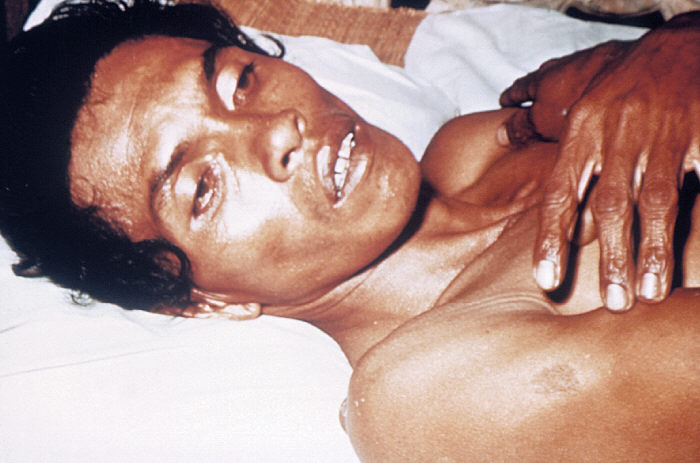
Sophie Martin Simpson is an Oxfam monitoring and evaluation officer in Haiti. she wrote this account after a visit to Artibonite province, where Oxfamis working hard to stem the spread of cholera.
I recently returned from two days with our cholera response team in the region of Petit Riviere in Artibonite. I was there to support our team and to collect information from the local population about existing water sources, their access to basic hygiene facilities such as showers and latrines, and their knowledge about cholera and cholera prevention. The first cases of cholera were reported in Artibonite in October and the region continues to be one of the worst hit by the outbreak. as such, it is a focus for Oxfam’s cholera response.
I visited rural communities and talked with people, some of whom proudly showed me their newly constructed family latrines. before Oxfam began its cholera response program, the majority of communities lacked toilet facilities.
In a number of locations, Oxfam has additionally set up ORS (oral rehydration solution) “corners“ ORS is the most effective way to keep people with cholera hydrated until the cholera-causing bacteria has passed through the body. Community volunteers, trained in treating water to ensure it is safe to drink, in hand-washing practices, and in ORS preparation, staff these sites. if community members suspect they have cholera, they can get instant assistance from the corner volunteer who supplies them with enough ORS and clean water to ensure they stay hydrated on their journey to hospital. Oxfam staffers carry out regular spot checks of these corners to ensure the quality of the treated water and that ORS is being prepared correctly.I was very happy to hear the corner volunteers report a decrease in the number of people presenting cholera symptoms in the past few weeks. It was also good to hear community members speaking repeatedly about the importance and benefit of having such ORS corners within easy reach of their homes as a means to help treat and prevent the spread of cholera.
Before the cholera outbreak, many community members were unaware of the symptoms of the disease, how it is transmitted or how to treat it. Since the outbreak, Oxfam has been working hard to educate people about these issues.
I attended two local meetings during which community members were encouraged to share what they had learned about cholera symptoms, ORS preparation, and how to handle the bodies of people who have died from cholera to prevent further spread of the disease. It was great to watch each and every person at the meeting stand up and with confidence l shout what they knew through a megaphone!
It was also reassuring to find the mystery and fear surrounding cholera– prevalent during the early weeks of the outbreak–dissipating. Oxfam’s health and hygiene messages are clearly getting through to increasing numbers of people who now have the knowledge, skills, and resources to effectively treat and manage cholera within their communities.